
What Makes Japanese Snacks So Irresistible?
Walking into the snack aisle of a Japanese supermarket or convenience store, particularly for those less familiar with the language, can seem like a trip into a whole new world. Old-fashioned sembei rice crackers rub shoulders with unusual flavors of potato chips (wasabi beef, anyone?), and cookies, chocolate-covered treats and gummies in every color of the rainbow all vie for your attention.
To find out about these tantalizing treats, we asked Chihiro Matsubayashi, a lifelong “snack researcher” and author. Under her expert guidance, a group of international snack lovers gathered to sample a representative range of Japanese snacks and learn about what makes them special.

Chihiro Matsubayashi, who tries 10 different snacks each day for research purposes
According to Matsubayashi, one of the greatest strengths of Japanese snacks is the sheer diversity of products available, which combines with the strong focus on creating seasonal flavors, an interesting connection to traditional Japanese cuisine. The level of attention to detail, ingredients, presentation and freshness set Japanese snack producers apart from their international counterparts.
Just consider the seemingly simple potato chip. “According to my research, even when only considering the texture of potato chips there are around 10 different variations, depending on thickness, cut and frying methods,” says Matsubayashi.
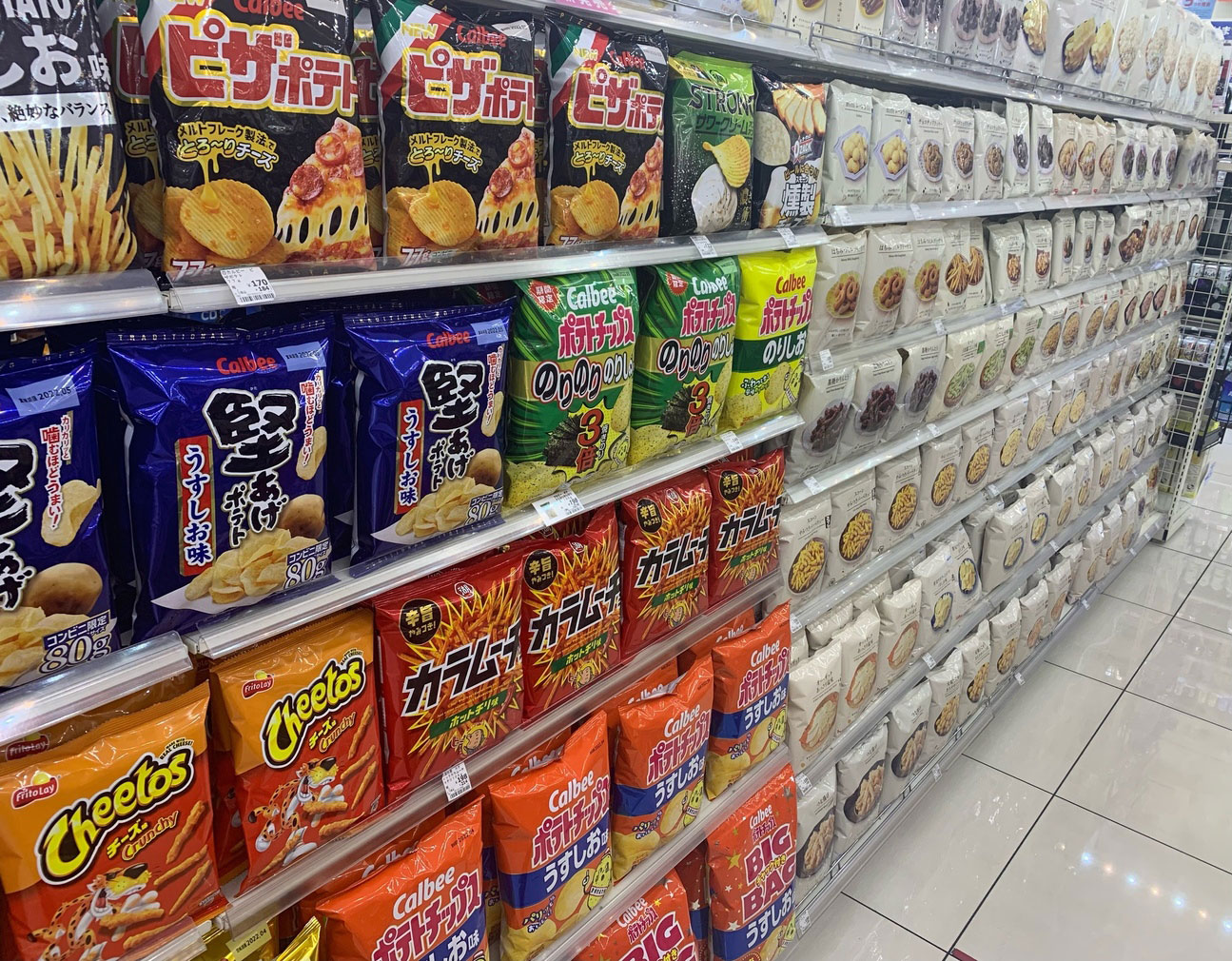
An example of the vast range of snacks one can find at Japanese convenience stores.
The growth of Japan’s mind boggling variety of snacks started in the 1980s, as the popularity and availability grew in tandem with the number of convenience stores in Japan. “This completely changed the landscape and scope for snacks, as before they were most commonly bought in supermarkets,” notes Matsubayashi. “At the time, grocery shopping for the household was most commonly done by mothers, who would choose snacks based on tried-and-true favorites or varieties that everyone in the family enjoyed. But the snacks at convenience stores could be chosen just for oneself.”
Matsubayashi herself has been a convenience store fan for decades, often stopping by on Tuesdays (when new stock comes in) to check out any new sweet or savory treats appearing on the shelves. This rapid, weekly changing cycle encourages snack makers to be creative and make new flavors and textures, resulting in a constantly changing range of seasonal or limited-edition treats to tempt shoppers.
Matsubayashi picked a sampler among the variety of Japanese snacks, including both the latest popular treats and some long established companies with longtime sellers that stick to their specialties, without being swept by trends. One of these is Kajitani Shokuhin, an Okayama-based company established in the 1950s which only sells four products, among them the crunchy Cigar Fry and Kongari Sakusaku crackers. These simple, classic biscuits have a delicate sweetness and touch of saltiness. A participant from China noted that, “it gives the treats a pleasantly nostalgic flavor that transcends borders.”
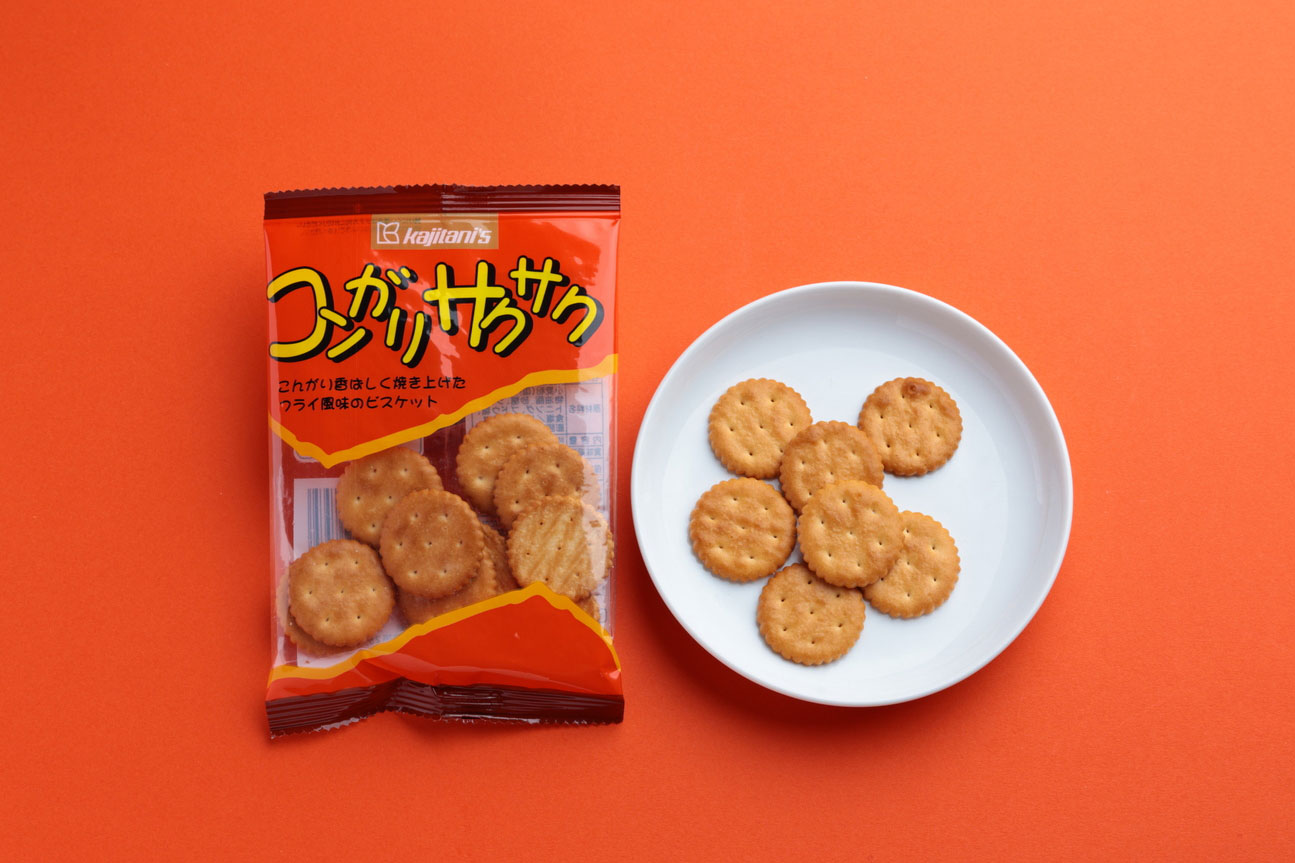
Kongari Sakusaku crackers have a delightfully retro flavor
Another longtime favorite is the iconic Bontan Ame, a lightly pomelo-flavored candy made with sugar and glutinous rice that has been around since 1924. While its retro flavor and packaging have recently had a resurgence, the maker Seika Shokuhin has also been taking their long experience in creating this chewy treat and branched out into new flavors, such as the juicy Momo Mocchi, which uses their traditional recipe but adds a more modern, bright peach flavor to reach a new generation of Japanese customers.
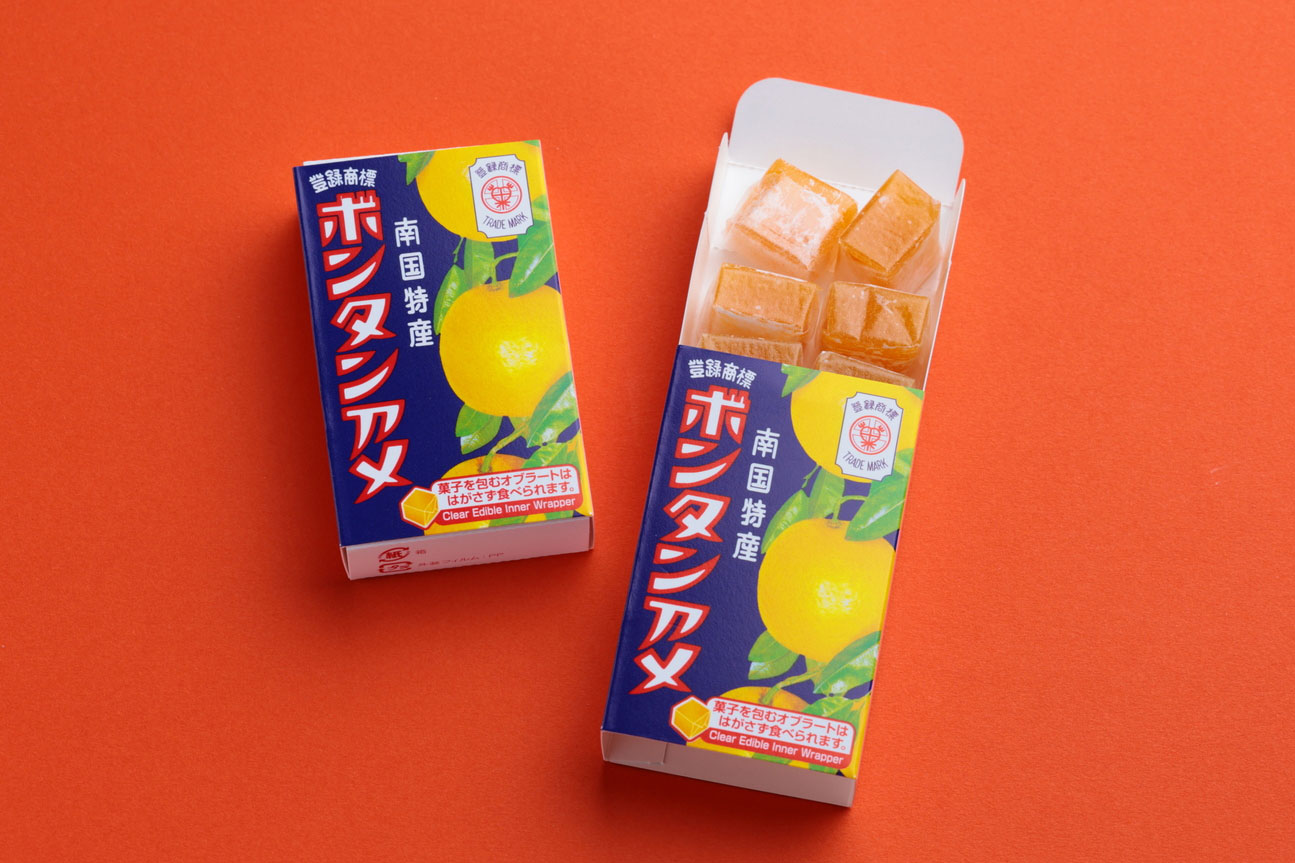
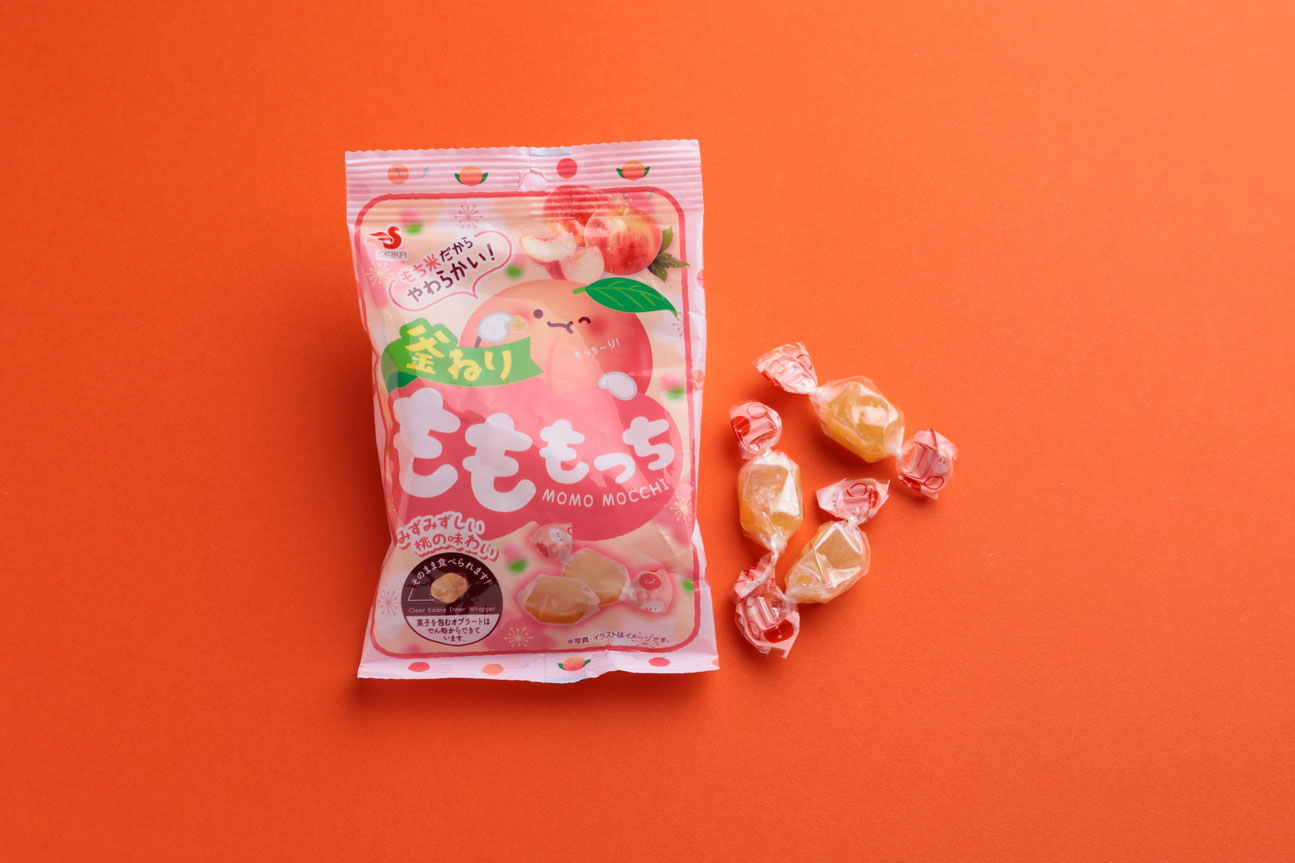
Bontan Ame and Momo Mocchi rice-based candy
Rice crackers are still a popular nibble in Japan, where they have been a beloved snack for well over 1000 years. Known collectively as beika, these crunchy tidbits are made from rice dough that is baked or fried, then flavored in a large variety of ways. The sheer variety of creatively flavored beika created by Morihaku Seika is astounding, with the bright kick from the yuzu citrus flavored ones and rich sweetness of the corn variety making an American participant say, “I want to snack on them along with a cold glass of beer.” The popular Beika Mochi crackers from maker Iwatsuka Seika have even made it to the American market, where the teriyaki flavor with its salty/sweet zarame (coarse sugar) flavor is a big hit. An Italian snack fan said, “I really enjoy the initial crunch that gives away to the nicely friable interior. The mix of savory and sweetness makes it so addictive!”
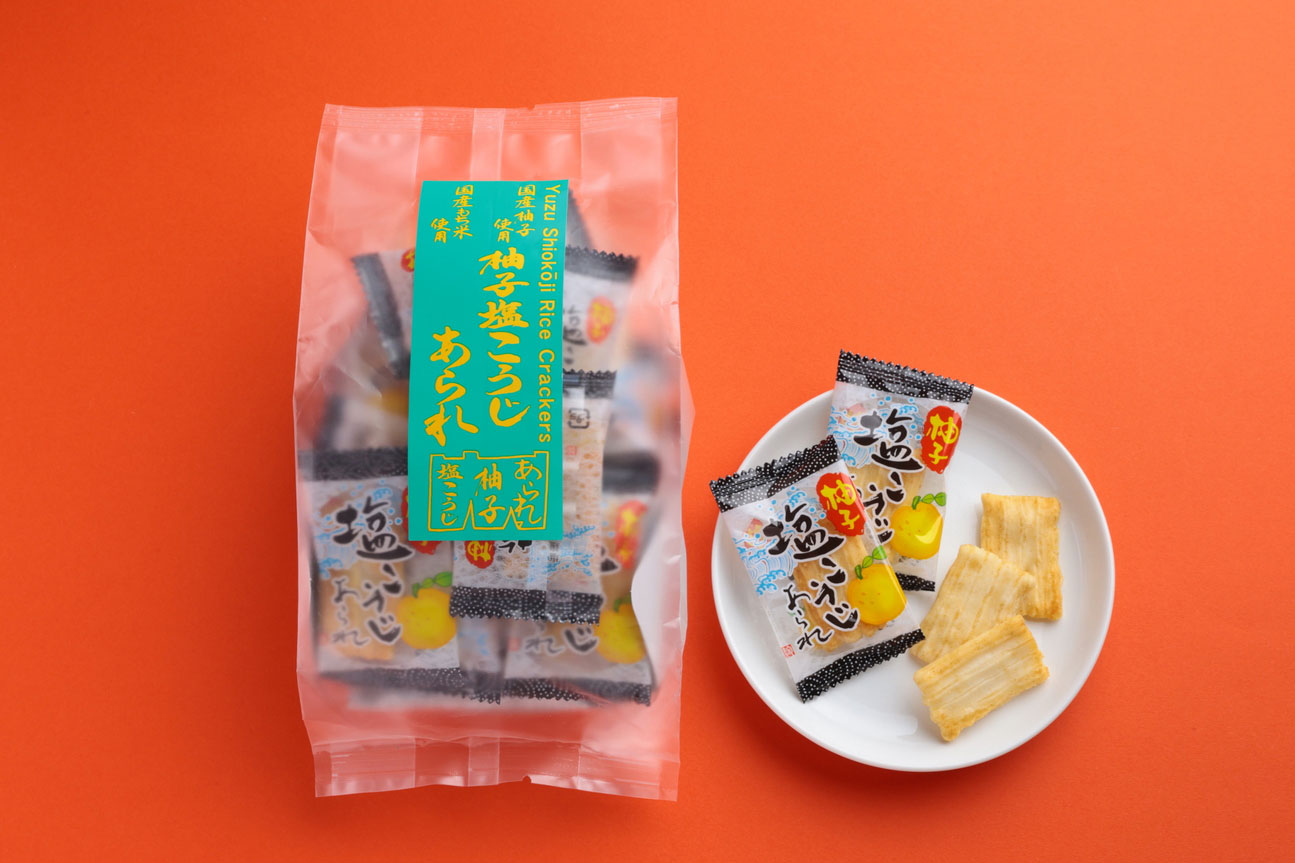
Yuzu Kouji Arare have a fresh kick, citrusy kick
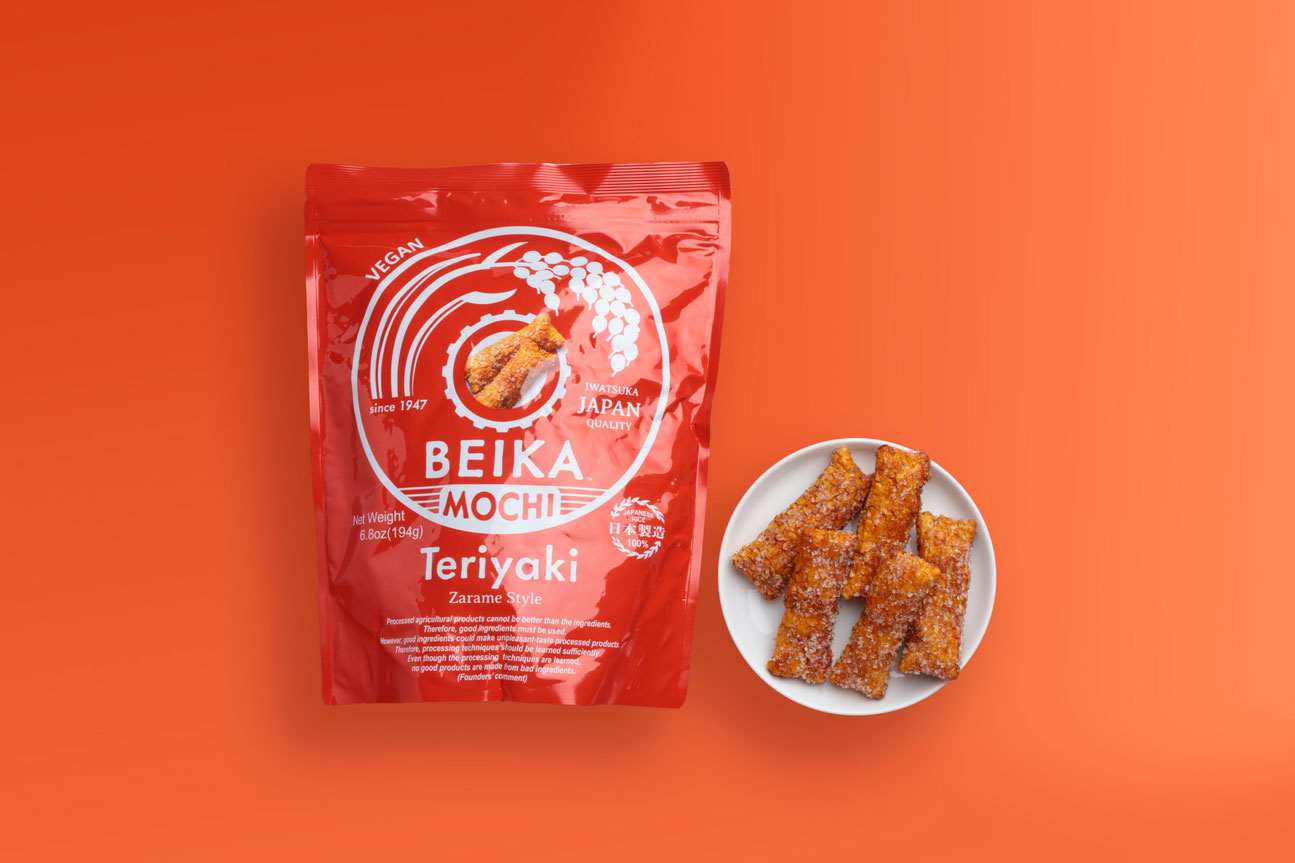
Beika Mochi in teriyaki flavor
Rice-based snacks continue to evolve and are spreading beyond Japan. For instance, the success of Japanese major leaguers, such as Shohei Otani, has also brought international recognition to some of their favorite snacks, with the appearance of a rather unique treat at the Dodgers Stadium. Snackmaker Echigo Seika’s Funwari Meijin (which are sold in the United States under the name Mochi Puffs) have been a surprise hit with baseball fans, who have fallen for the surprising melt-in-your-mouth puffs. Matsubayashi points out that it took over a decade of attempts to create the inimitable texture of the snack. Made from Japanese rice and not fried, despite its crunchy exterior, an American foodie participating in the taste test said, “these are the perfect bite!” about the kinako soybean powder-flavored nibbles.
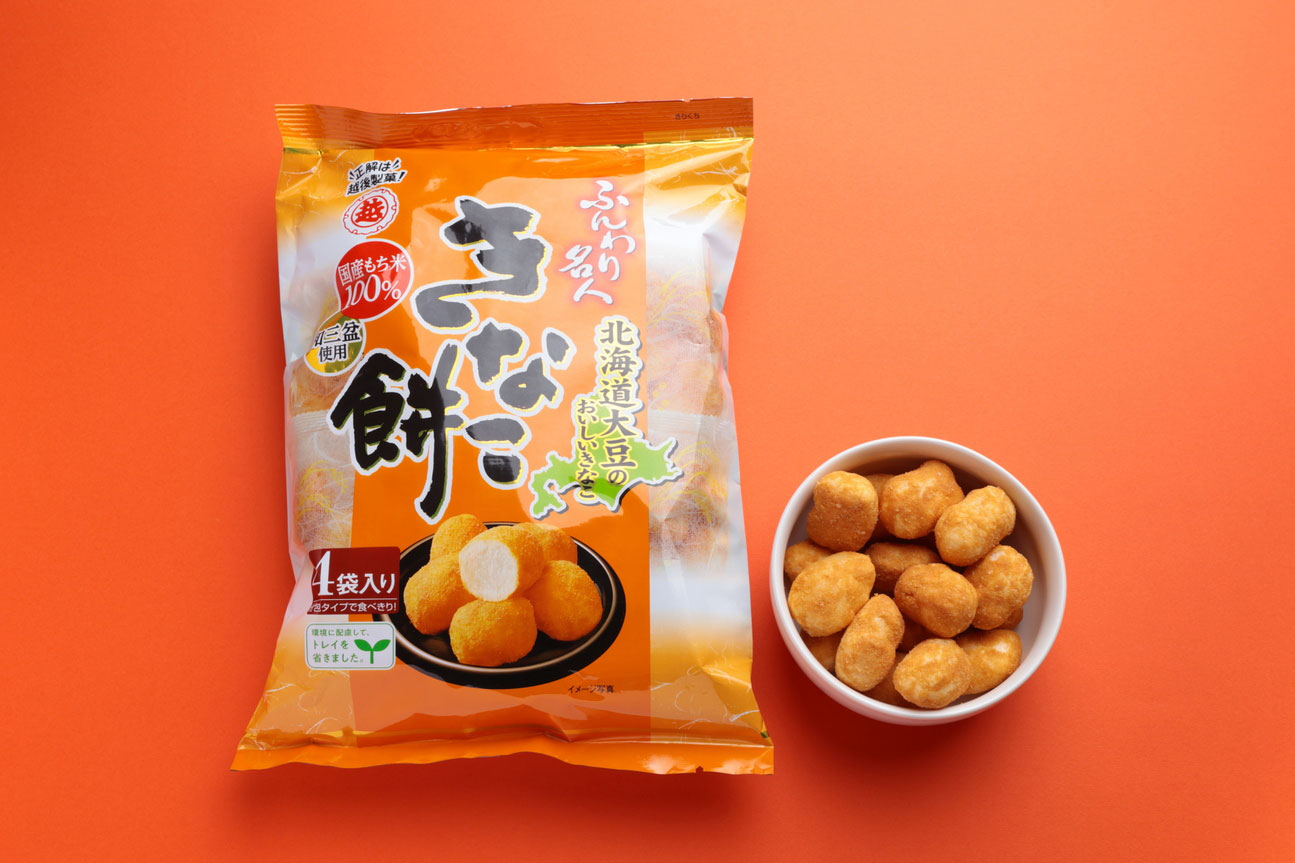
Funwari Meijin in the kinako mochi flavor

Participants were pleasantly surprised by the texture of Funwari Meijin mochi puffs
For those with more of a sweet tooth, the Fukuoka-based company Nanao Seika has a plethora of tempting options, including the Cream Sand lineup, made from two crispy wafer thin cookies filled with various flavors of cream. With typical Japanese attention to detail, the baking times and procedures change slightly each day, depending on temperature and humidity. All those who tried the cookies marveled at the softness of the cream, expecting it to be denser, and how this creates a pleasant contrast with the crunchiness of the cookies. The strawberry flavored variety, made from Amaou strawberries grown in Fukuoka was also a hit, with an American snack lover saying, “I love the fresh fruitiness of the flavor.”
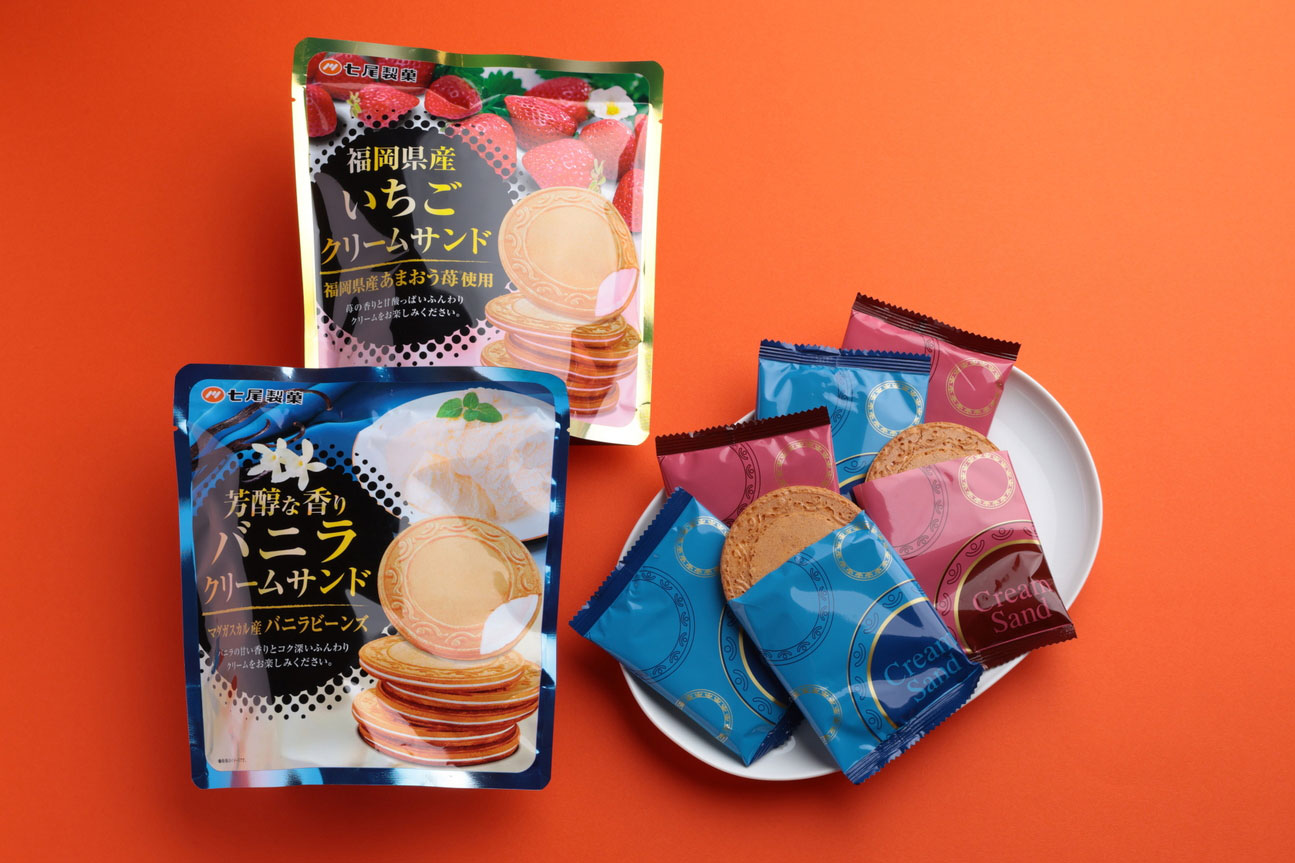
Cream Sand cookies, with a light fluffy filling
Of all the options presented, the most unique are perhaps the Popin’Cookin’ “educational sweets” from maker Kracie. Using simple chemical reactions, such as making jellies from calcium and algae, children can create adorable replicas of sushi, cakes, sparkly jewels and more from gummy candy. The level of detail is quite astounding, and these sweets have even been adopted by schools as teaching aids.
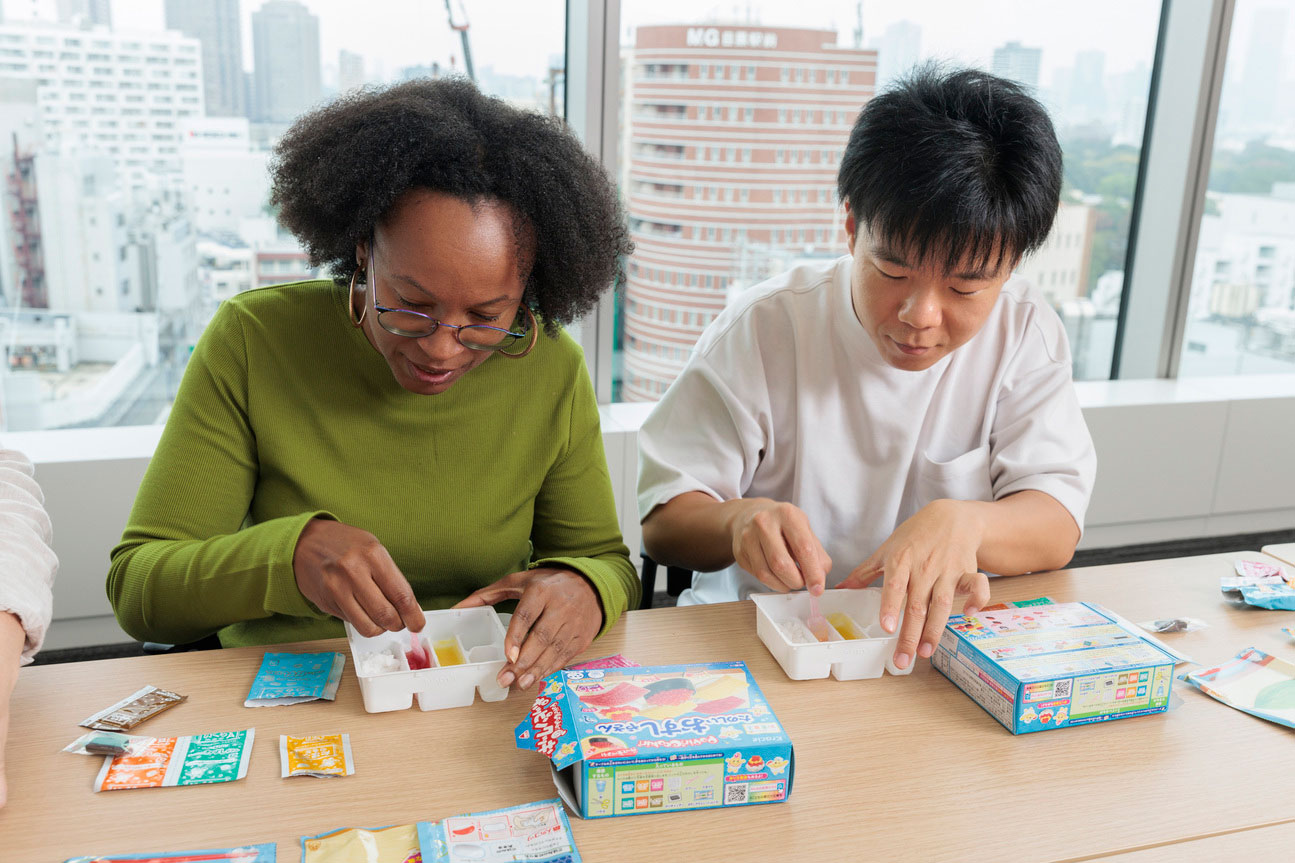
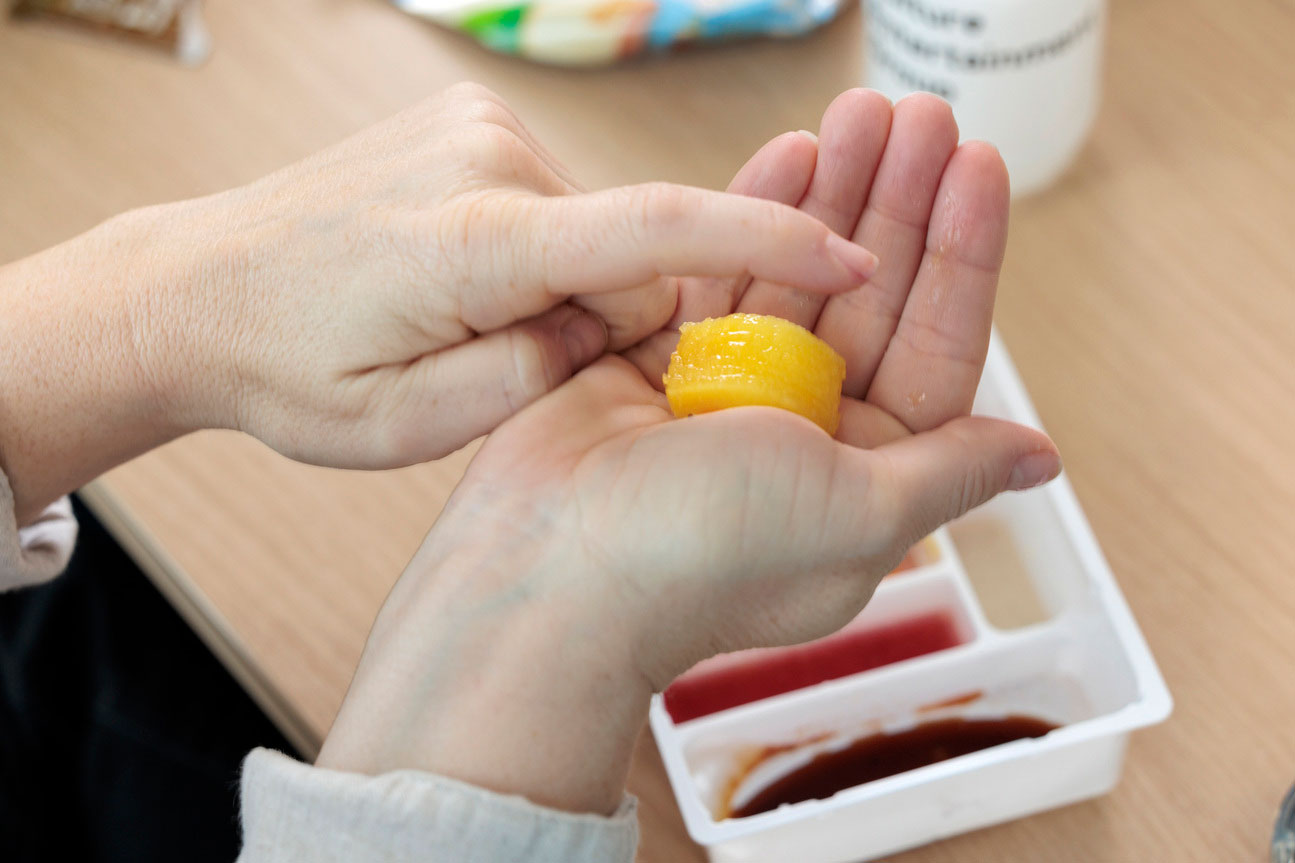

The American, Chinese and Italian participants all had a lot of fun trying to create candy sushi
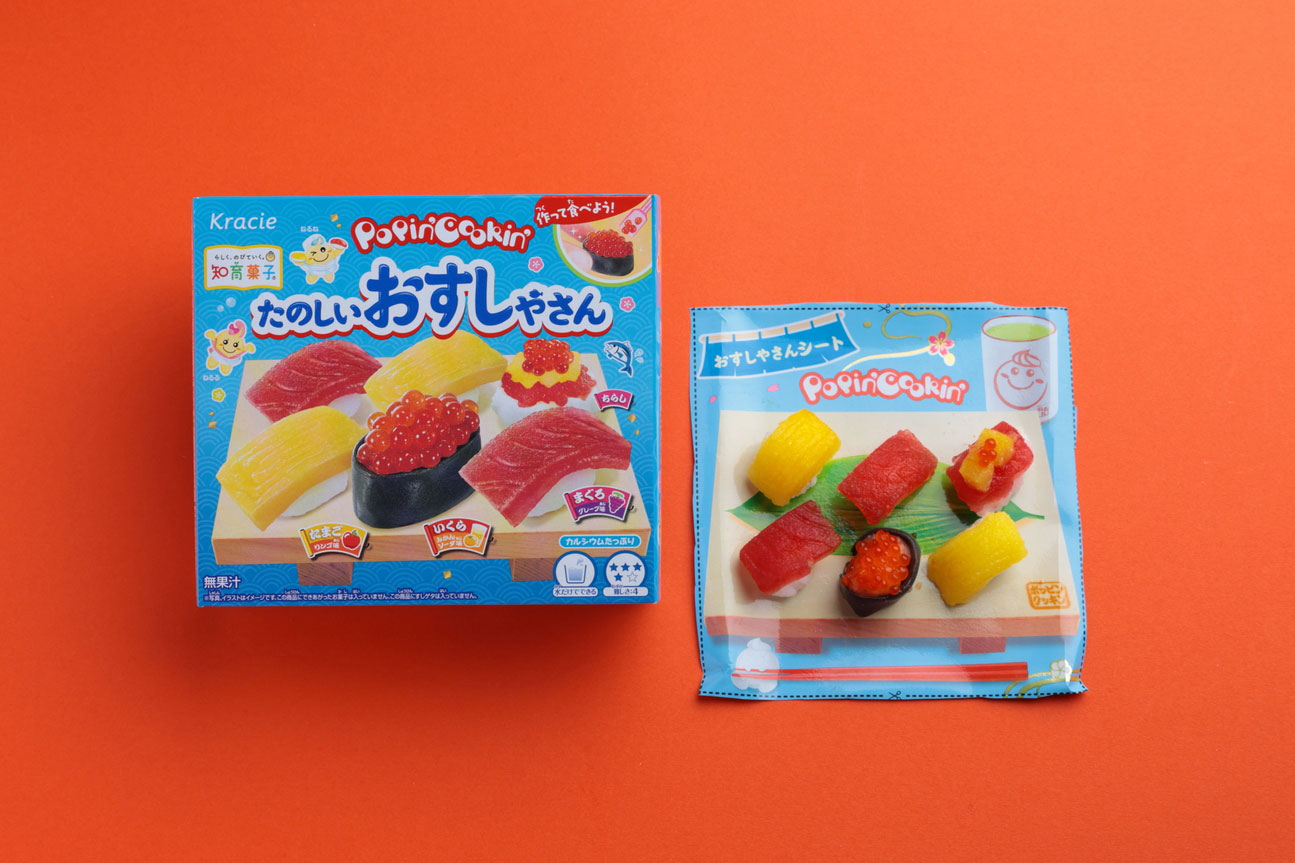
The Popin’Cookin’ sushi candy making sets, which an example of the finished product on the right
“Attention to detail and a distinct sense of playfulness are two of the trademarks of Japanese snacks,” notes Matsubayashi. “There is a strong focus on not only the flavor, but also maintaining high quality in the shapes of each individual piece.” A sweet treat that perfectly illustrates her point is Sakusaku Panda, made by Kabaya Shokuhin. Not only do the chocolate covered biscuits have a detailed image of a panda face, but there are 70 different expression variations and, very occasionally, a surprise koala face thrown into the mix. Besides enjoying the well-balanced sweetness of the dark and milk chocolate, the tasters enjoyed discovering the different panda faces in each bag.
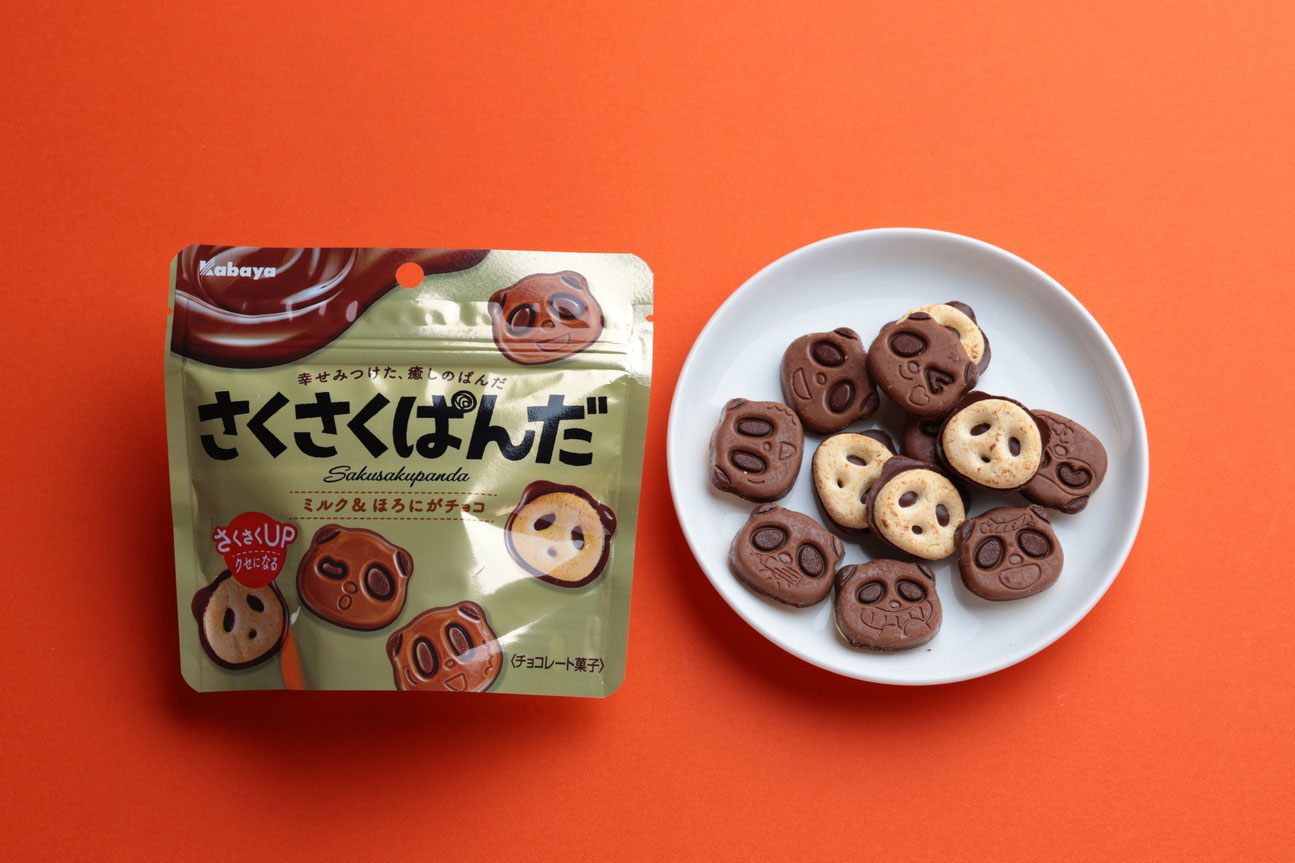
Just some of the many faces of the Sakusaku Panda chocolate-covered cookies

Our snack testers, checking out the different expressions of Sakusaku Panda
“When people visit Japan, I really hope that they take the time to check out the shelves in the convenience stores and other shops to look for special snacks,” says Matsubayashi. Many companies will create treats with seasonal flavors. For example, during the autumn Sakusaku Panda cookies were available in a sweet potato brulé’ variety. Going into winter that switched to strawberry tart, as the berries are a popular winter fruit.
Whether you visit during the magical cherry blossom season in spring, come to experience the summer festivals, decide to take a trip to see the vibrant autumn colors or enjoy the snowy landscapes of winter, “because of the constant cycle of new and limited edition flavors, each time you have the chance to come across a once-in-a-lifetime treat.”






